Project Vision:
Initially, I was stuck in the ideation phase. I debated between three concepts for this project: something made out of cork, a recycled dress, or PVC furniture. All three concepts had different aesthetic and functional goals. After comments and suggestions from family, friends, and classmates, I chose to create a Cork Disco Ball. The idea stemmed from the popular decorative cork balls found online from several sources, one in particular from Jan Elftmann is shown below, as well as my idea to integrate a light bulb.
Contrary to the reflective properties of a traditional disco ball, this one would house a light bulb and create interesting shadows. The primary function of the disco ball was to be a lighting feature. The shape was intended to be spherical and the color varying based on different colors and stained effects. Each cork is unique and used, exemplifying the upcycle motif. Additionally, at first I only thought to hang the disco ball from the ceiling, but after testing it out, I realized that it also worked well as a table center piece. The artifact has a constant exterior diameter, but due to the gaps between the corks, there is an intriguing texture and depth to the piece.
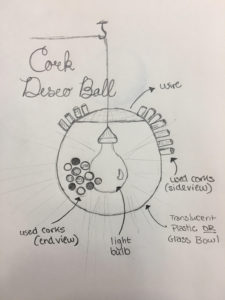
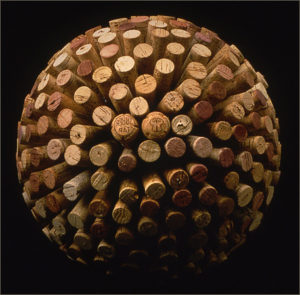
Inspiration:
The inspiration for this project comes from the vineyars & lavender fields on southern France, particularly the region of Provence. I have very fond memories of this area from my childhood, as it is a place I would travel with my family regularly. The different hues and shades of browns and purples in the used corks evoked fond feelings and memories, hence the reason I stuck with this concept instead of the other two. Addtionally, the caligraphy and crests (or logos) on the bottles have been worn out, giving the corks are ancient feel, which reminds me of the old castles in the region as well as the historical importance of wine making in the area.
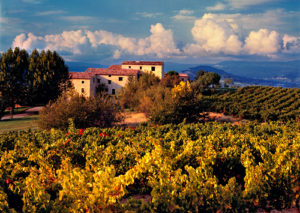
Actual vs. Ideal Design Process
The two images below show the Design Loop of this project. Obviously, the ideation and concept generation phases had several iterations because I struggled to settle on an idea. Once I was able to create a very basic prototype with a few corks, I set out to find my own. I knew sourcing materials for this project would be challenging: I would have to ask restaurants to hold their corks for me and I would have to return to collect them just before closing. Luckily, instead of visiting all the restaurants on Pearl street, I managed to find an online website that sells different grades of used wine corks, champagne corks, and tequila bottle corks. This made the materials sourcing step much easier; hence, the removal of several lines between the manufacturing, sourcing materials, and prototype stages of the Actual Design Loop. From there, the project was easy to manufacture and no secondary operations were needed.
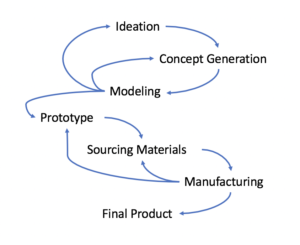
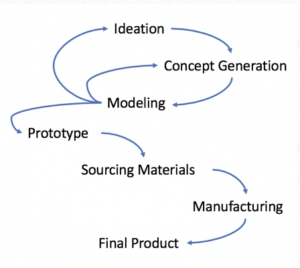
The most significant change in the process, which is not labeled in the images above, was my change in design after the sourcing materials step. I struggled to find a glass bowl to the house the light bulb as well as a strategic and safe way to cover the bowl opening and secure the light bulb. Instead of a Cork Disco Ball, I settled for a Decorative Cork Ball. Though the primary lighting fixture function disappeared, I could still see the cork ball as a hanging art piece or a table center piece.
Manufacturing:
Once it was determined that no light bulb or glass bowl would be used in this project, I purchased a styrofoam ball for the main structure of the cork ball. In all, the materials for this project include the following list. Many of these items can be seen in the picture below of the cork ball also finished.
- Used corks – Widgetco, Inc.
- Styrofoam call – Michael’s
- Hot glue gun & glue – my own
- 24 gauge wire – Michael’s
- Brown paint & paint brush – my own
- Paper towel – my own
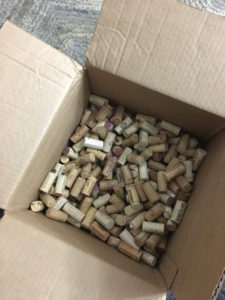
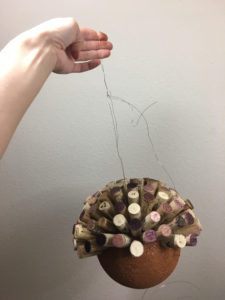
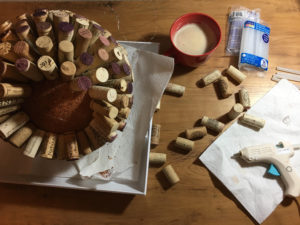
The steps for making a similar cork ball are as follows:
- Thread wire (size is variable) through styrofoam ball (again, size is variable)
- Paint styrofoam ball brown and let dry
- Attach corks to styrofoam ball using hot glue gun
- Let dry and remove hot glue strands
Comparaison to Original Goals:
Unfortunately, I was not able to achieve my original functional goal of producing a lighting feature. The idea turned about to be difficult in the sourcing materials and manufacturing phase do you the theoretical weight of the glass bowl and my inability to find one that would work suitably. Regardless, I was still able to achieve my artistic goals. The decorative cork ball has a unique, used feel due to the different hues of brown and purple, and the varying shapes and sizes of the corks give an interesting texture and deep to the ornament. All in all, I am pleased with my work and am happy with my final product.
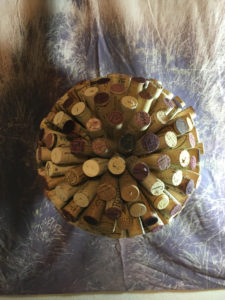
What is next…
There are two options for this project. One, I could give it to my friend who expressed interest in hanging it in her apartment. Two, I would removed the corks from the ball, scrape off the glue, and reuse the corks for another project. I got very excited when ordering the corks, so I still have an additional 150 corks that have yet to be touched. I have no interest is hanging it in my room because it is heavier than expected, and I do not have the space to use it is a center piece.

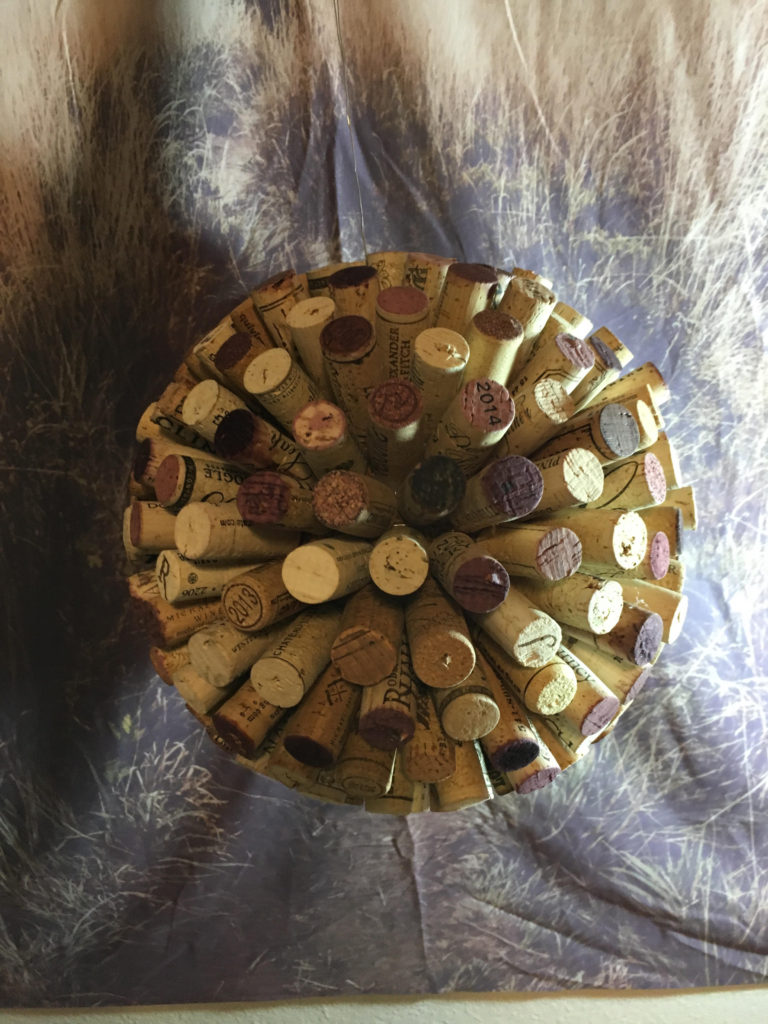
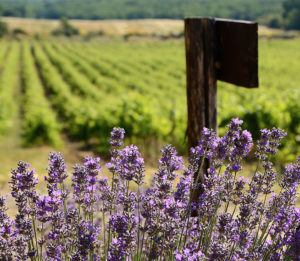
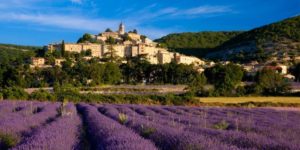
9 Comments. Leave new
Looks classy, nice work. It seems that your design process was simpler than anticipated, as far as when you actually started building. Keep working on the light idea–consider LED globes, light-up Christmas ornaments, or other bulbous containers like you originally thought with perhaps terrariums.
I love the illusion it makes. I caught myself staring at it during the presentation, it almost sucks you in. The lamp idea is really cool, but I like outcome of it more. Hanging it would make for an interesting piece for guests to look at. The stained ends make add a little color to it which goes well with the main beige color. What do you plan to use the left over champagne corks for?
Kudos to you for sticking with your initial idea even when you faced problems sourcing your materials. Thats a lot work sticking all the cork screws perfectly around the ball. The different colors of the corks gives out a great looking aesthetic. I hope you get a chance to make it with a light bulb as you first imagined. Nice work.
I really admire the variety of styles of the corks on your piece, each of them tells a distinct story. A lot of the corks had several different shades of red which looked visually compelling.
I would love to see the ball with light inside of it!
The inspiration for this project is very cool and unique! Your presentation was great, the slideshow was put together very well and did a good job showing each step of this project. The final product came out really nice and is neat to look at since it kinda looks like all the corks are about to explode outwards. Looking up close at all the different logos is sweet too, every single one is unique.
I really love how you were inspired by your previous home in France. This has a very nice aesthetic to it as well, especially with all of the different shades of red. I think it would have been really difficult to achieve the functional goal of having it as a light, so it is understandable that you pursued this as an aesthetic instead. It’s great that it has a built-in hanging mechanism! Great work!
This looks like it would’ve taken a long time to make but it came out really great! Very well executed!
I like where you got your inspiration from. The organic aesthetic is one of my favorites. I could see this being used as decor in many restaurants, fancy bars, etc. I love how unique each cork is, I love the stains on them.
It’s interesting that the inspiration for your project came from the brown and purple colors you love. I had no idea you could purchase used wine corks. Form wise, I think it’s really impressive how you were able to evade gaps on the styrofoam ball. Your aesthetic planning really shows in your final product.